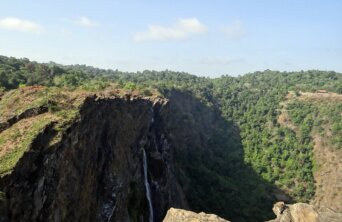- About
- Topics
- Picks
- Audio
- Story
- In-Depth
- Opinion
- News
- Donate
- Signup for our newsletterOur Editors' Best Picks.Send
Read, Debate: Engage.
| topic: | Climate Change |
|---|---|
| located: | India |
| editor: | Bindu Gopal Rao |
July 30, 2024, is a day the Indian state of Kerala will not forget quickly. On this date, a landslide wiped out several villages in the Wayanad district and killed over 422 people. Kerala, however, was not the only state that has faced the brunt of the same. A few months ago, northeast India, battered by Cyclone Remal, also faced deadly landslides.
The monsoon rains have also triggered cloud bursts in India, especially in Himachal Pradesh and Uttarakhand, where several people died. The fury of nature has caught most people on the wrong foot even as the country comes out of a scorching summer.
The question remains about why the country faces excessive rain and its associated impacts, like cloudbursts and landslides.
Some pin it on excessive real estate construction in the name of infrastructure, deforestation, soil erosion, and climate change. The fragile ecology of these regions has been damaged in the process.
Global warming has led to rapid water evaporation and an increase in cloudbursts that have caused massive flooding in the country's Northern parts.
In Kerala, which falls in the eco-sensitive Western Ghats, the recommendations from the Gadgil Commission report of 2011 have not been implemented. The report called for the distinction of eco-sensitive regions by Madhav Gadgil, a renowned ecologist and founder of the Centre for Ecological Sciences, Indian Institute of Science, Bengaluru.
Clearing forests to make way for agricultural plantations, unscientifically widening roads, and even counterproductive ecological projects are all causes for the same. For instance, wind turbines being built as an alternate, cleaner energy source, have destabilised land and increased the risk of landslides.
A recently developed India Landslide Susceptibility Map has indicated that 4.75% of India is highly susceptible to landslides, and even the Eastern Ghats that had not been on the radar before have found a mention. The solution is all about ensuring a sustainable development model, and that sensitive areas have the correct engineering solutions.
The administration has its reports and tools, but the real challenge is implementation before it is too late.
Image by Bishnu Sarangi.

